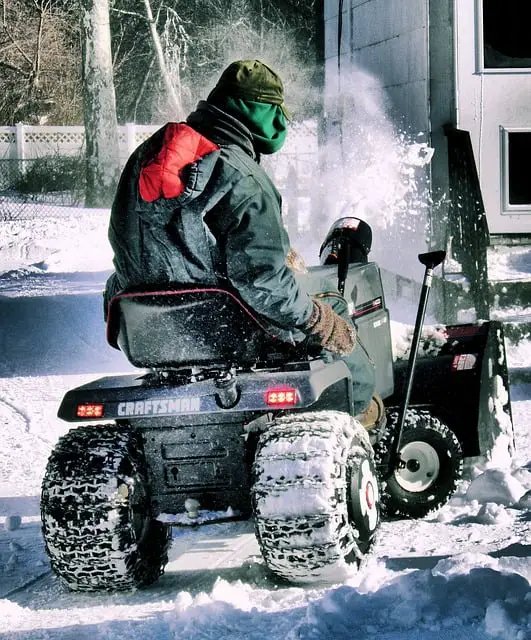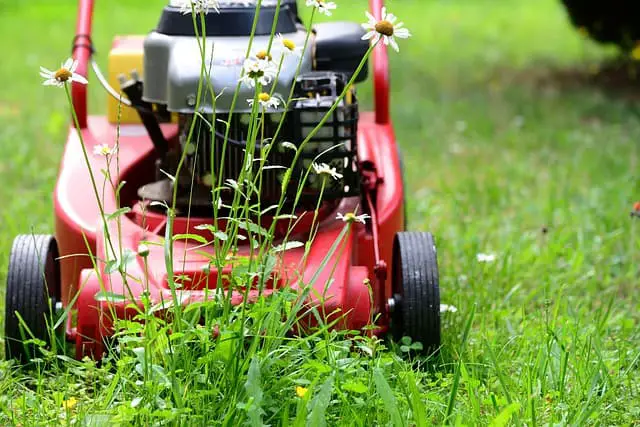When properly maintained, cleaned, and stored, a good grade two or three-stage snowblower can last 15 to 25 years. A high-quality snowblower may survive for decades if you drain the gas, replace the sparkplugs, and follow the manufacturer’s instructions in the owner’s handbook.
Continue reading to discover more about snowblower maintenance and how long you can expect your snowblower to last.
How Long Can You Expect A Snow Blower to Last?
An excellent high-quality snowblower can last between 15 and 25 years. The operational life of your machine, on the other hand, is determined by how much you care for and maintain it.
A well-maintained snowblower will last a long time, but the various parts within it will have a limited shelf life.
It is critical to maintain and examine your blower regularly. To extend the life of your equipment, use suitable storage procedures during the off-season and replace, repair, rebuild, or clean the components.
A snowblower with a single broken part isn’t garbage. There’s practically no need to throw away perfectly decent equipment just because it’s not performing as expected.
As long as the outside of your snowblower is in excellent shape, all of the parts inside may be repaired or replaced for a fraction of the cost of buying new.
Ariens Snow Blowers: How Long Do They Last?
Ariens snowblowers are among the most affordable high-quality equipment available. This brand should endure at least ten years.
According to the Ariens official website, a small amount of critical once-a-season maintenance can help extend the life of your snowblower and make it easier to use.
Remove the wheels from the axles and coat the axles with an anti-seize compound or oil. The wheels should then be replaced. Additionally, you should replace the oil once a season for optimum performance.
Electric Snow Blowers: How Long Do They Last?
Your electric snowblower’s quality and lifespan are determined by your purchase brand and how well you care for it. Using improper gasoline, for example, might cause your carburetor to fail.
Similarly, purchasing a low-cost blower will end up costing you more money in the long term.
If the price of a snowblower is between $600 and $800, it is dubbed “Economy.” While you can occasionally locate an excellent economy snowblower, they are rarely as good as more expensive versions that last for years.
Any snowblower that costs less than $600 should be avoided at all costs. These machines are usually manufactured of low-cost counterfeit parts and are not long-lasting.
Craftsman Snowblower: How Long Do They Last?
The lifetime warranty on Craftsman hand tools is well-known. Unfortunately, the same cannot be said about Craftsman power equipment such as snow blowers, but they still come with some of the strongest warranties in the industry.
Craftsman takes pride in being among the finest, and a Craftsman blower should last 15 to 25 years.
Like other Craftsman tools, Craftsman snowblowers are built in China, which may surprise you. The MTD corporation, which manufactures components and engines for a number of outdoor tool brands, is not based in the United States.
Nonetheless, you’re more likely to run into user-error issues, such as using outdated gas, than coming across a faulty manufactured item. MTD maintains high-quality standards.
Honda Snow Blowers: How Long Do They Last?
Honda snowblowers may endure anywhere from 10 to 20 years. Honda bowers, despite their name, are made in the United States.
All Honda HS720 and HSS snow blowers, for example, are assembled in a North Carolina factory. While the parts are obtained worldwide, they are of excellent quality.
Honda snowblowers might be a little abrasive at times. Check the sparkplug first if this happens, as it’s the most likely source of the problem.
It’s ideal to change the sparkplug in a Honda snowblower once a season or after twenty hours of operation.
What Is The Life Expectancy Of A Toro Snowblower?
Toro snow blowers are the best on the market and may endure for up to 40 years. On the other hand, a low-cost snow blower could only last 3 to 5 years.
Even if that cheap machine is half the price, you’ll spend more to replace it than if you bought a suitable blower and maintained it properly.
At least for this year, Toro snowblowers are marred by an ominous recall on one type. Amputation is a concern with the 2021 Toro Power Max 826 OHAE Snowthrowers with model number 37802.
The company received five complaints of occurrences where the auger on its Toro Max Snowthrower failed to disengage when the control lever was released.
What is the Life Expectancy of a Spark Plug in a Snowblower?
Your snowblower’s spark plugs should last the whole season. After around a hundred hours of use, which varies depending on how you operate your blower. When they die, you’ll need to replace them.
Additionally, after every 20 hours of usage, inspect the sparkplug for signs of damage to verify it is still in good working order.
Your sparkplug’s ceramic can only withstand a certain amount of vibration before it starts to disintegrate.
Similarly, the metal electrodes in the tip become caked in carbon over time or acquire other difficulties due to their use. In certain circumstances, cleaning the plugs and resetting the gap can allow you to use them again.
What Is The Life Expectancy Of A Battery Snow Blower?
Snowblower batteries typically last 40 to 45 minutes on a single charge. You may use them immediately after they have been recharged, even if it takes time.
Lithium-ion snowblower batteries typically last two to three years in the long run. When you buy a battery, the number of charges it can hold is mentioned on the box.
On the other hand, most lithium-ion batteries can withstand between three and five hundred recharges.
Snowblower Belts: How Long Do They Last?
The factory-installed rubber belt in your new snowblower should last five to seven years. However, appropriate storage is required to get the maximum mileage out of engine belts.
These pieces will extend over time and will also dry out. If you live in an colder climate, you should remove the belt after the last snowfall and store it somewhere damp to prevent the material from breaking down too quickly.


